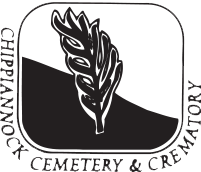Tours
To arrange a tour call our office at (309) 788-6622. Download our tour brochure here!
Of all the sites that its founders could have chosen for the planning of Chippiannock Cemetery, this one, on the summit and slopes of Manitou Ridge overlooking the Mississippi and Rock Rivers, is probably the most beautifully serene and historically significant.
This is where the native Americans of the Sauk and Mesquakie nations established Saukenuk, along the north shore of the Rock River, in 1730. Soon, the village housed over 3,000 souls, a population which later grew to more than 7,500, thought to be the largest Indian population in the United States.
Over 100 years later, there still was no formal cemetery for white settlers in Rock Island. The dead were buried in Bailey Davenport’s pasture, just above the city. And the city was growing, from a population of 5,000 reported in 1854 to over 10,000 three years later, in 1857. At this time, local leaders felt the need for a formal cemetery which would provide space for family plots with suitable monuments, and house records of the burials.
Rock Island’s First Formal Cemetery
Chippiannock’s founders – and their names can be read on headstones and monuments throughout the cemetery: Holmes Hakes, S.S. Guyer, Ben Harper, William L. Lee, Bailey Davenport, Henry Porter – 14 of them in all, were important community leaders of their day. It was to them that Dr. and Mrs. Ebenezer Lathrop conveyed “by metes and bounds” some 62 acres of land for the purpose of establishing a cemetery.
Five acres of that parcel were subsequently deeded to the Bishop of Chicago for the Catholic families of the area. Later on, an additional 38 acres were added to Chippiannock’s original 57, making a total of 95. Susan Lewis Goldsmith, mother of Bailey Davenport, suggested the name Chippiannock, an Indian word meaning “Village of the Dead,” for the new burial ground.
Landscaping by Mr. Hotchkiss; plantings by Mr. O’Shaughnessy
About this time, in 1855, the new cemetery board voted to obtain the services of a Mr. Hotchkiss. He was the engineer responsible for Greenwood Cemetery, Long Island, New York, who at the time was designing Bellefontaine Cemetery in St. Louis. It was Hotchkiss who designed Chippiannock – for the most part, as it stands today.
Chippiannock’s grounds, which had previously been covered with blue grass, corn hills and scattered trees, were soon planted in evergreens, flower beds, and rose gardens.All this was under the direction of its first superintendent, Patrick O’Shaughnessy, a native of Ireland, veteran of the FloridaWar, and a professional gardener.
Horticulturists Tell Us
In 1931, the U.S. Bureau of Horticulture requested Professor L.H. Pammel of the State College at Ames, Iowa, to record and label the trees and shrubs planted throughout the cemetery. There were some 150 species and varieties at the time. Many more have since been added.
Architectural Landscaping
Four miles of paved roads now meander through the cemetery in a tree-shaded circuitry that runs from the cemetery’s summit down to the frontage road just
above 12th Street, Rock Island. Here and throughout the cemetery are carefully tended plots with simple markers, fine monuments – some as old as Chippiannock itself – and stately mausolea.
Interspersed with these are new gravesites, as the cemetery has by no means reached its capacity, and there remain over 35 acres of unplatted ground in the uncut timber facing 17th Street.
A National Treasure
Taken together, Chippiannock’s architectural landscaping, art and architecture have earned it a place in the National Register of Historic Places. According to the U.S. Department of Interior, the listing is based on the cemetery’s excellence as an example of the early rural cemetery movement, which dates back to the mid-1800’s. The award was received here in May of 1994.
One can trace the history of the territory, and even the nation, in the inscriptions on the headstones of the adventurers and settlers, river men and preachers, statesmen and builders who have left their mark upon the territory. There are many unique and imaginative monuments to be found here – rugged boulders, spheres, anchors, anvils, cradles, Celtic crosses – even a pyramid and two family dogs. The tales that go with them are worth telling.


















